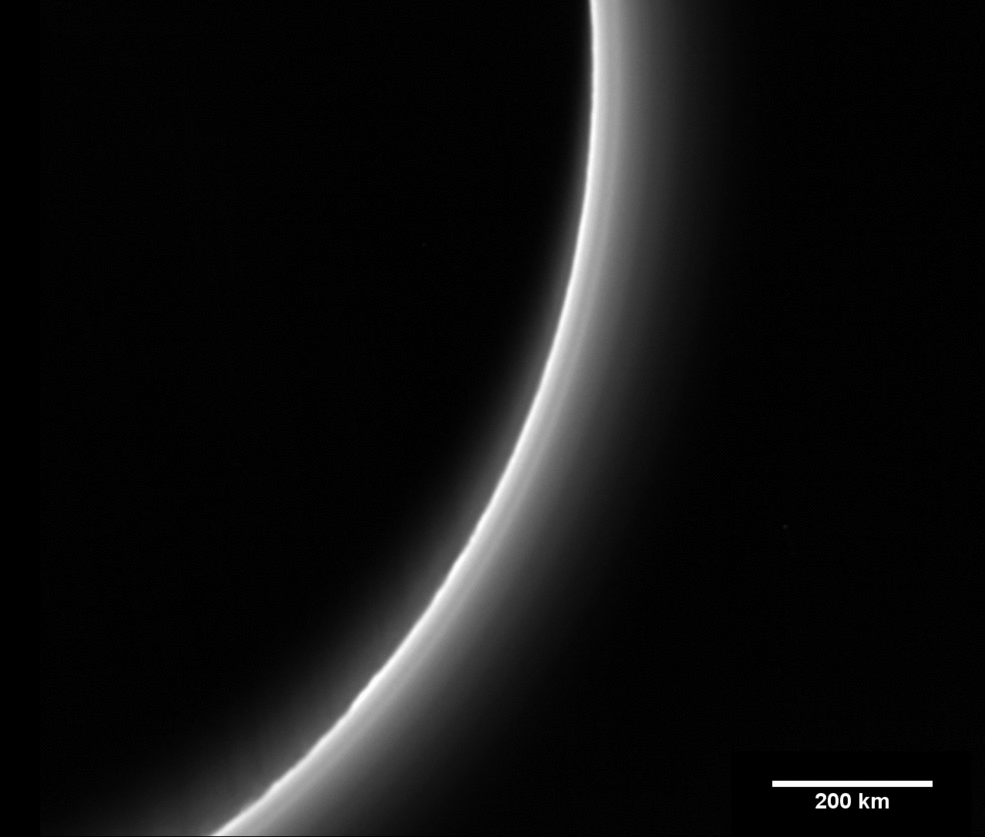New Horizons’ historic journey to Pluto and beyond continues to provide surprises. As data from the spacecraft’s close encounter with Pluto and its moons arrives at Earth, scientists are piecing together an increasingly intriguing picture of the dwarf planet. The latest discovery is centred around Pluto’s atmosphere, and what are called ‘atmospheric gravity waves.’
Atmospheric gravity waves are a different phenomenon than the gravity waves that were detected for the first time in February, 2016. Those gravity waves are ripples in the fabric of space time, first predicted by Albert Einstein back in 1916. After years of searching, the LIGO instrument detected gravity waves that resulted from two black holes colliding. The discovery of what you might call ‘Einsteinian Gravity Waves’ may end up revolutionizing astronomy.
New Horizons has revealed surprise after surprise in its study of Pluto. Its atmosphere has turned out to be much more complex than anybody expected. It’s composed of 90% nitrogen, with extensive haze layers. Scientists have discovered that Pluto’s atmosphere can vary in brightness depending on viewpoint and illumination, while the vertical structure of the layered haze remains unchanged.
Scientists studying the New Horizons’ data think that atmospheric gravity waves, also called buoyancy waves, are responsible. Atmospheric gravity waves are known to exist on only two other planets; Earth and Mars. They are typically caused by wind flowing over obstructions like mountain ranges.
The layers in Pluto’s atmosphere, and their varying brightness, are most easily seen when they are backlit by the Sun. This was the viewpoint New Horizons had when it captured these images on its departure from Pluto on July 14, 2015. The spacecraft’s Long Range Reconnaissance Imager (LORRI) captured them, using time intervals of 2 to 5 hours. What they show is the brightness of the layers changing by 30% without any change in their height above the surface of the planet.
LORRI, as its name suggests, is a long range image capture instrument. It also captures high resolution geologic data, and was used to map Pluto’s far side. The principal investigator for LORRI is Andy Cheng, from the Applied Physics Laboratory at Johns Hopkins University, in Maryland. “Pluto is simply amazing,” said Andy Cheng. “When I first saw these images and the haze structures that they reveal, I knew we had a new clue to the nature of Pluto’s hazes. The fact that we don’t see the haze layers moving up or down will be important to future modelling efforts.”
Overall, Pluto and its system of moons has turned out to be a much more dynamic place than previously thought. A geologically active landscape, possible ice volcanoes, eroding cliffs made of methane ice, and more, have woken us up to Pluto’s complexity. But its atmosphere has turned out to be just as complex and puzzling.
New Horizons has departed the Pluto system now, and is headed for the Kuiper Belt. The Kuiper Belt is considered a relic of the early Solar System. New Horizons will visit another icy world there, and hopefully continue on to the edge of the heliosphere, the same way the Voyage probes have. New Horizons has enough energy to last until approximately the mid-2030’s, if all goes well.

